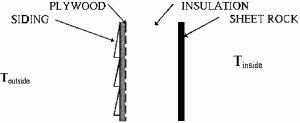HVAC Design Problem

As an engineer for an energy consulting company, you determine which materials should be used in the heating, ventilation, and air conditioning of buildings. Ethical issues arise when the contractor's designs fail to meet California Energy Standards.
Questions on Ethics and Professionalism
Introduction
You are a new engineer at a well-known solar/HVAC energy consulting company in the California area. Your responsibility is to help your clients design their houses. Many people come to you with a general idea of what they want in a house. You are required to determine what materials should be put in the walls, what type and size of windows to use, etc. As your background is in heating ventilating and air-conditioning, this requirement is not a problem for you.
Another one of your responsibilities is to ensure that the house satisfies the California Energy Standards 1. In the past, for every one of 16 zone locations in California there is a maximum energy budget standard. Mild climates like coastal areas near Los Angeles have heating energy budgets of 1.1 kbtu/ft2 of floor area, while cooler climates in the mountains have budgets of 18.4 kbtu/ft2 of floor area. For example, Sacramento, California (zone 12) has an annual energy budget of 28.6 kbtu of site energy used per square feet of floor space (14.2-heating, 14.4-cooling). A house cannot be built legally in the state of California without this certification. The methods usually used to certify houses are computer programs like MICROPAS by Enercomp of Sacramento, California 2. You are very familiar with this program and have used it extensively in your house design projects.
Engineering Background
The heating and cooling annual energy consumption depends largely on two factors: weather conditions (mainly degree days, DD), and building related factors (such as insulation in the walls, outside air leakage rate (infiltration), type of windows, etc.). The effective degree days for a given location in California can be obtained from ASHRAE handbooks. The thermal resistance of the walls, windows, slab, ceiling, etc. are calculated from input data on the house. Then the annual heating energy can be manually estimated from:
Annual Heating Energy = [£ UiAi + mc)inf ]xDD
Where U = individual overall heat transfer coefficient of the wall, ceiling, etc. U= 1/ER R = combined thermal resistance of the individual components in the wall, ceiling, etc. Ai= corresponding surface area associated with Ui minf= mass flow rate of infiltration (sometimes given in air changes/hour, ACH) c = specific heat of air DD = degree Days
Annual cooling energy can be calculated in a similar, though slightly more complicated, manner. Remember that if either U or A is decreased for a given building component, the annual energy consumption is decreased for a given-sized house in a specific location. Very energy efficient houses have U values in the order of 0.03 to 0.05 Btu/hrft2F (Rfactor= 20 to 33) for the opaque walls. Normal double-glazed windows have a U ~ 0.55 Btu/hrft2F (Rfactor~ 2). New high performance windows can have values much lower than this (Rfactor = 3 to 6), at a much higher price!
Part 1. Design Calculations
A friend of yours, who is a contractor, asks you to oversee the design of a set of residential homes in a new sub-division in Sacramento. His types of houses are all similar with respect to their construction, geometry and, thus, energy consumption. Data on one of their solar homes is given below:
Floor area = 1500 sq. ft. (30 ft x 50 ft) Opaque wall area = 1000 sq. ft. Window area = 280 sq. ft. Infiltration = 0.25 air changes per hour Windows: standard double pane Ceiling insulation: 12 inch glass fiber
Wall construction is shown below.
| Material | Thickness (in) | Rfactor(Δx/k) |
|---|---|---|
| Wood | 3/8 | .47 |
| Plywood | 1/2 | .62 |
| Glass Fiber | 3 1/2 | 11 |
| Glass Fiber | 12 | 38 |
| Sheet Rock | 3/8 | .32 |
You are asked to verify that the house satisfies the California Energy Standard heating budget using any one of a number of manual calculation methods and by a computer code.
Part 2. Ethical Problem
Upon calculation of the annual energy consumption of the his standard house you find that the design is not in compliance. The calculated heating energy consumption is 16.8 Btu/sq. ft while the maximum allowable heating energy consumption by the code is 14.2 kBtu/ sq. ft.
You call the contractor and inform him of the situation. He questions your calculations and says that he is positive that his houses are in compliance. You tell him that you have checked your calculations manually and by computer. You tell him that it is possible to meet the standard by using special high-performance windows or by planning for lower window areas. You mention that these high performance windows with triple glazing and argon gas can reduce his window UA to 50 Btu/F, but this will cost an additional $13/sq. ft of window area 3.
Because large window area is a selling point of his house design, he does not want to reduce it. He also complains that he cannot afford such expensive windows. He casually comments that he really will not have to change the window type at all, as he will put the cheaper windows in the houses after the design is certified. He tells you to do the design certification based on the high-performance windows and send him the results.
Questions on Ethics and Professionalism
- Discuss the legality of what your contractor friend is doing.
- Does it violate any professional codes (e.g. NSPE)?
- Should you tell your boss, or anyone else?
- Should you report him to the California Energy Commission?
- What are the consequences of the possible solutions?
- Design alternate solutions to present to your engineering manager.
- What do you do?
Engineering Solution
The UA values for the building envelope are given as follows: (Typical values for Ro Ri are taken from ref [4].)
Walls:
The combined Rfactor is given by: Rwall = Ro + Rside + Rply + Rin + Rsr + Ri =0.16+0.24+0.62+ 11 +0.32+0.68 = 13.0 Uwail = 1/Rwall = 1/13 = 0.077 (Btu/hr`ftd`F)
Then
Uwall = 0.077(Btu/hrft2F) (lOOO)ftd = 77 Btu/hrF
Ceiling:
UAceiling = Aceiling /Rceiling = 1500/38 = 39.5 Btu/hrF
Slab:
U'Pslab = 0.6 (Btu/hrft2F) 160 ft = 96 Btu/hrF
Where P is the perimeter of the slab
Windows:
UAwindow = 0.55(Btu/hrft2F) 280 ftd = 154 Btu/hrF
Infiltration:
mc = ACH(volume)Density(c)
= 0.25(1500ftd)8ft(0.0751b/fte)0.24Btu/lbF = 54 Btu/hrF
(standard residential construction has a wall height of 8 feet)
Then
[UA + mc = 77 + 39.5 + 96 + 154 + 54 = 421 Btu/hrF
The heating degree days at Sacramento California are 2502 FDays
Then
Qannual = [IUA + mc]DD = 421 (Btu/hrF)(2502FDay)(24hr/Day) = 25.2 million Btu per heating season.
Then
Qannual/ftd = 25.2x 10^6/1500 = 16.9 kBtu/ftd
which is above that allowable energy consumption of 14.2 kBtu/ftd
Changing double glazed windows to high-performance windows with more panes and argon gas can yield an Rfactor of about 6. Then:
UAwindow = 0.166(Btu/hrft2F) 280 ftd = 47 Btu/hrF
This will yield
Qannual/ftd = 314(2502)24/1500 = 12.6 kBtu/ftd
which is below the maximum allowable annual heating energy consumption for this area of 14.2 kbtu/ftd.
Discussion Questions
- Should the building owner advertise his homes as having the high-performance windows?
- Should the engineer tell his boss what the contractor said to him? Is he legally required to do so?
- Is the added expense of the high-performance windows actually excessive?
- Would adding more insulation in the walls provide an adequate solution?
- What if the contractor intends to lie about his houses' windows?
References
These problems were originally developed as part of an NSF-funded project to create numerical problems that raise ethical issues for use in engineering and other course assignments. The problems presented here have been edited slightly for clarity.


